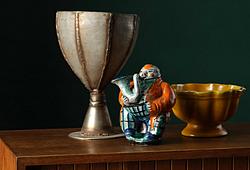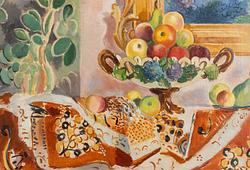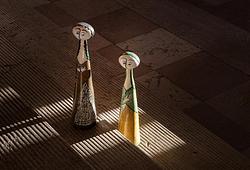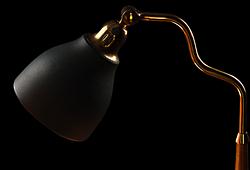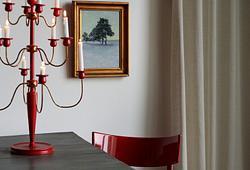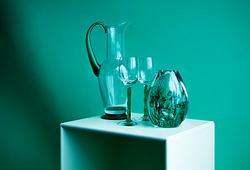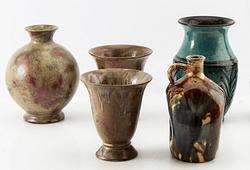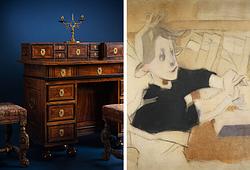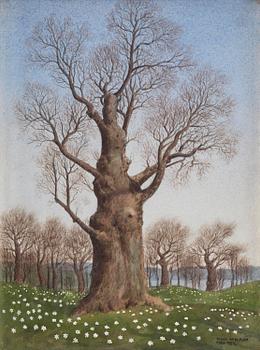Pablo Picasso
"Sculpture: Head of Marie-Thérèse"
Signed with stamp and numbered 18/50. Drypoint etching, 1933. Published by Lacourière, Paris. P. 32 x 23 cm. S. 46 x 37 cm.
Provenance
Galerie MDA, Helsingborg.
Literature
Bloch 250, Baer 288.
More information
Picasso worked and developed this drypoint engraving in 20 different stages directly on the plate in a manner typical of the artist. Remnants of earlier phases remain in the background, giving the etching its rich tone. This sheet is the most important graphic translation of Picasso's sculptures of heads from 1930/33 and especially of the bust in plaster of Marie-Thérèse Walter executed in 1931. Another version of the sculpture appears in the charcoal drawing on canvas ‘Sculptured Head (Marie-Thérèse) from 1932.
Picasso met the seventeen-year-old Marie-Thérèse in 1927. He was married to the Russian ballerina Olga Khokhlova since ten years. The blonde and athletic Marie-Thérèse became his model and mistress. She would also become the mother of their daughter Maya, born in 1935. During this period, Marie-Thérèse appeared in drawings, prints, paintings and sculptures. The name of the young recurring model was a well-kept secret. It was only in the 1960s, when Francoise Gilot's memoirs were published in 1964, that the mysterious goddess-turned-muse was given a name.
Through engraving, etching, lithography and linocuts, Picasso's graphic works provide a valuable insight into the artist's creative process. He builds up images and returns to subjects important to him throughout his career. Variations on a particular subject - whether it is bullfighting, bacchanalia, portraiture, the old masters or the theme of artist and model - reflect the artist's fascination with working in series. The motifs recur in graphic form, in drawings, sculptures and in large works on canvas.
Artist
Pablo Picasso (1881-1973), Spanish painter, printmaker, sculptor, and ceramist. Active in France since 1900. He is, alongside Matisse, the most dominant artist of the 20th century. After passing through a blue period, a pink period with circus scenes and harlequins, he created his first cubist painting, "Les Demoiselles d'Avignon," in 1907 under the influence of African sculptures. Together with Braque, he further developed cubism by breaking down surfaces, which were then represented in various simultaneous aspects. In 1912, he left nature and recreated a new reality, only to return to acrobats in 1916. During the 1920s, he approached surrealism and worked with whimsical forms while also producing drawings and etchings in line style. During the Spanish Civil War, he was violently stirred, and it is now that his great protest in the painting Guernica comes to fruition. In the late 1940s, he settled by the Mediterranean and produced nymphs, centaurs, and fauns, as well as paraphrases of the works of old masters, and painted powerful terracotta ceramics in Vallauris. His abundant graphic production follows the same development as his painting.
Pablo Picasso was not only an artist but also a skilled ceramist. During his lifetime, he created hundreds of ceramic works, such as jugs, vases, and plates. Picasso's passion for ceramics began when he visited the annual ceramics exhibition in Vallauris in southern France in 1946 and was introduced to the craft by the artist couple Suzanne and Georges Ramié, who owned the Madoura pottery. During the following years which he spent in Vallauris, Picasso met his second wife, Jacqueline Roque, whom he depicted on the ceramic pieces. He also decorated the ceramics with abstract animals and bullfighters in a cubist style.
Read more



